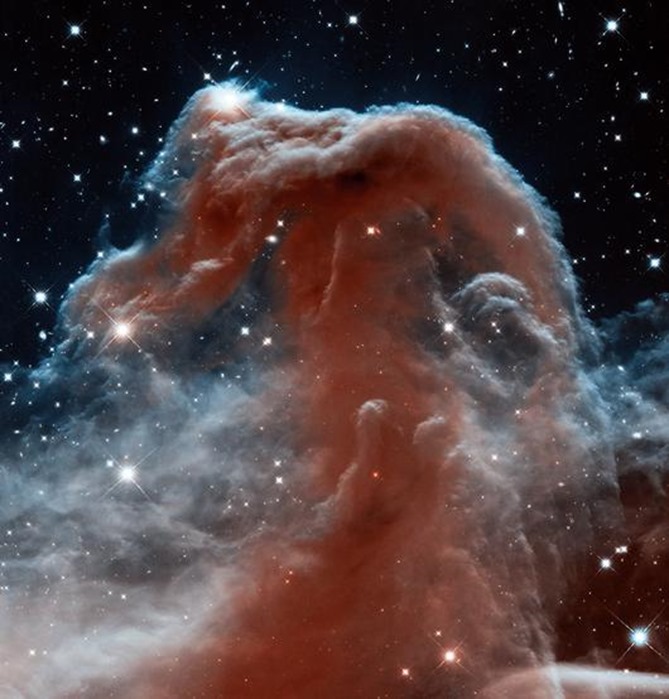Το Νεφέλωμα της Αλογοκεφαλής (γνωστό επίσης και ως αντικείμενο Μπάρναρντ 33, είναι ένα σκοτεινό νεφέλωμα στον αστερισμό του Ωρίωνα. Το νεφέλωμα καταγράφηκε για πρώτη φορά το 1888 από την Σκοτσέζα αστρονόμο Βιλιαμίνα Φλέμινγκ, στο Αστεροσκοπείο του Πανεπιστημίου Χάρβαρντ.
 Το νεφέλωμα απέχει περίπου 1.500 έτη φωτός από τη Γη. Είναι ένα από τα πιο γνωστά νεφελώματα, επειδή το στροβιλιζόμενο νέφος σκόνης και αερίου, από το οποίο αποτελείται, μοιάζει με κεφάλι αλόγου όταν παρατηρείται από τη Γη.
Το νεφέλωμα απέχει περίπου 1.500 έτη φωτός από τη Γη. Είναι ένα από τα πιο γνωστά νεφελώματα, επειδή το στροβιλιζόμενο νέφος σκόνης και αερίου, από το οποίο αποτελείται, μοιάζει με κεφάλι αλόγου όταν παρατηρείται από τη Γη.
Το σκοτεινό αυτό νέφος σκόνης και αερίου είναι μία από τις περιοχές του Συμπλέγματος Νεφών του Ωρίωνα όπου λαμβάνει χώρα αστρική γένεση. Αυτό το «αστρικό μαιευτήριο», όπως αποκαλούνται οι περιοχές αυτού του είδους, ενδέχεται να περιέχει πάνω από εκατό είδη οργανικών και ανόργανων αερίων, καθώς και σκόνη που αποτελείται από μεγάλα και σύνθετα οργανικά μόρια.
Η κόκκινη/ροζ λάμψη προέρχεται από αέριο υδρογόνο που βρίσκεται κυρίως πίσω από το νεφέλωμα και ιονίζεται από το κοντινό άστρο Σίγμα Ωρίωνα. Μαγνητικά πεδία που υπάρχουν στην περιοχή διαμορφώνουν τα αέρια που διαφεύγουν από το νεφέλωμα σε διακριτά ρεύματα, που αποτυπώνονται ως γραμμές στο ροζ φόντο. Στα όρια του τεράστιου νέφους βρίσκεται μία λαμπρή λωρίδα αερίου υδρογόνου. Οι πυκνότητες των αστέρων είναι αισθητά διαφορετικές στις δύο πλευρές της.
Wikipedia


